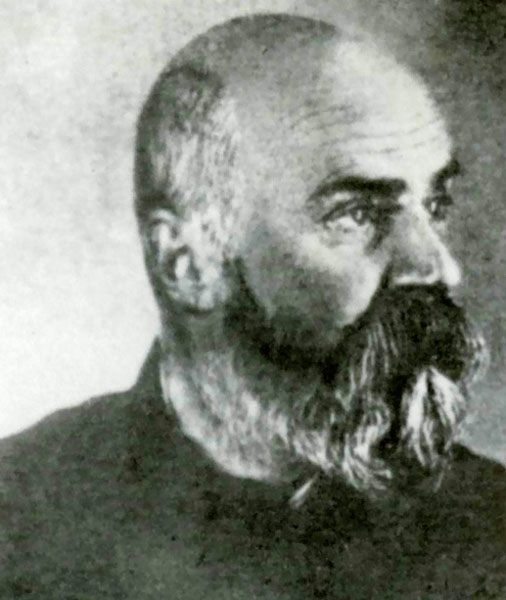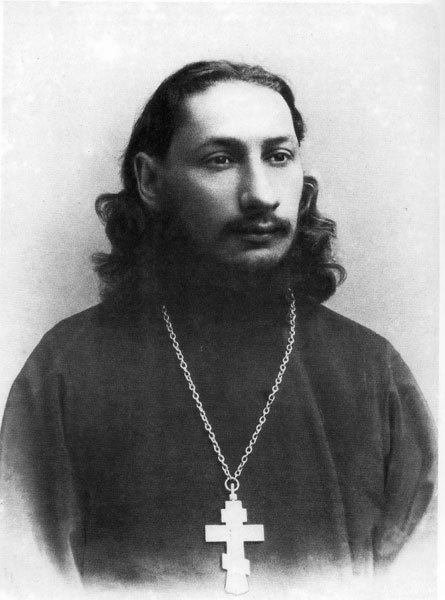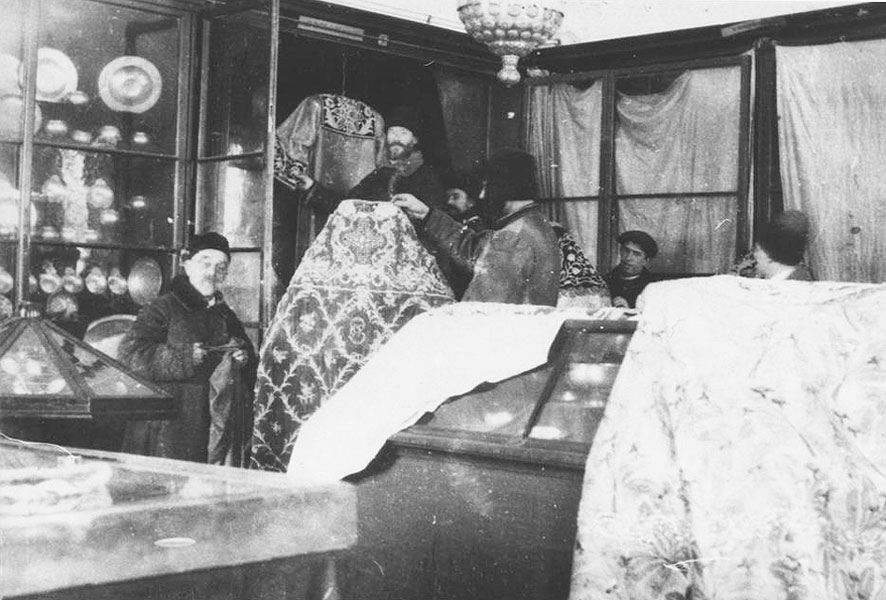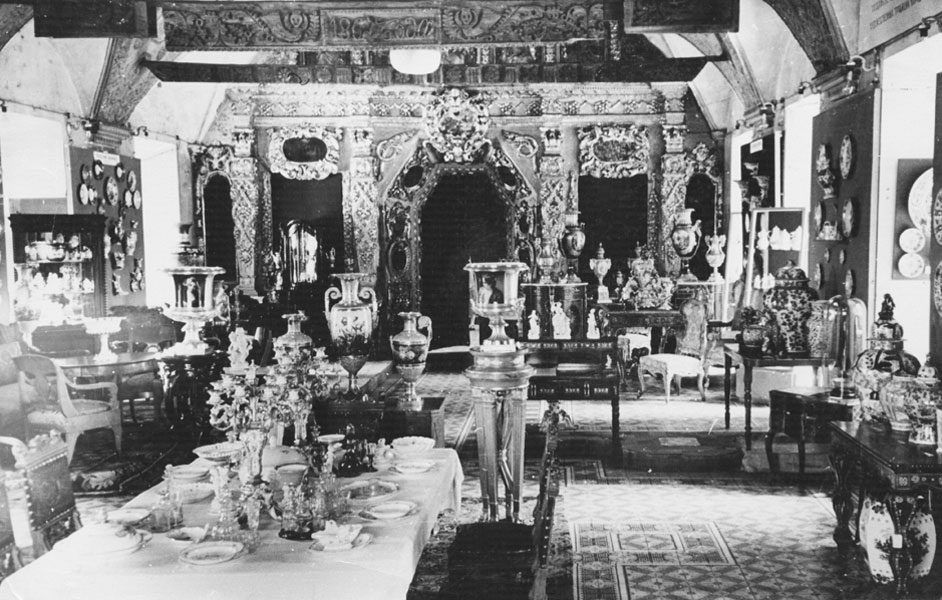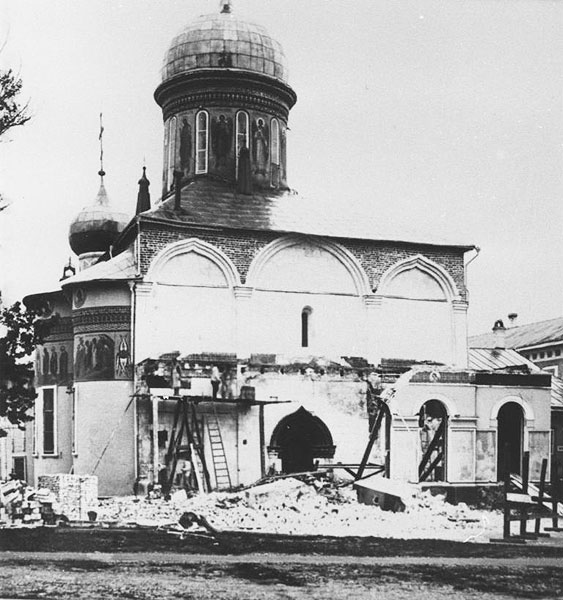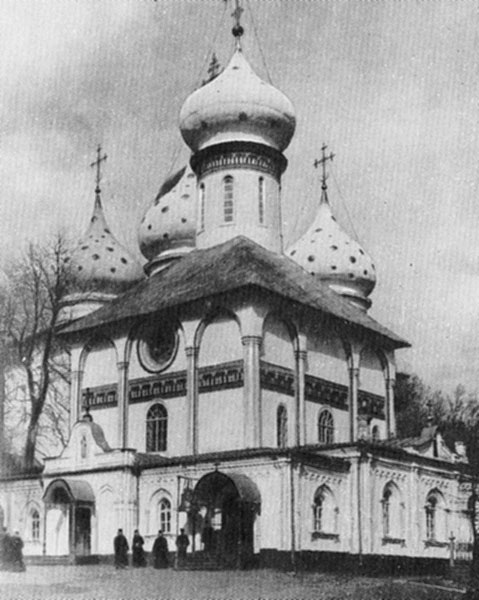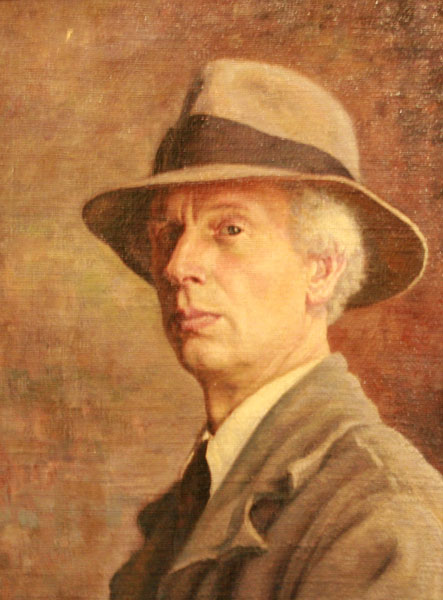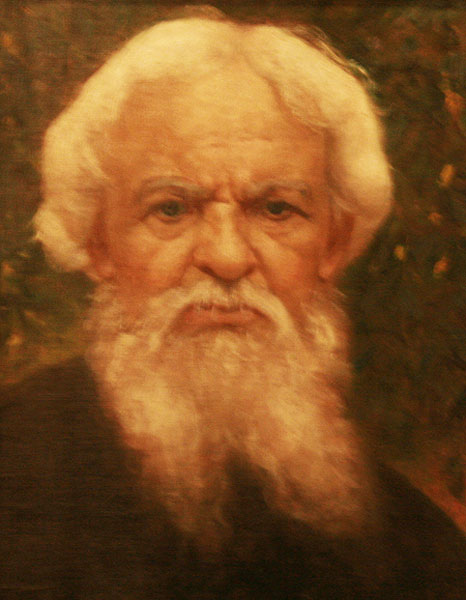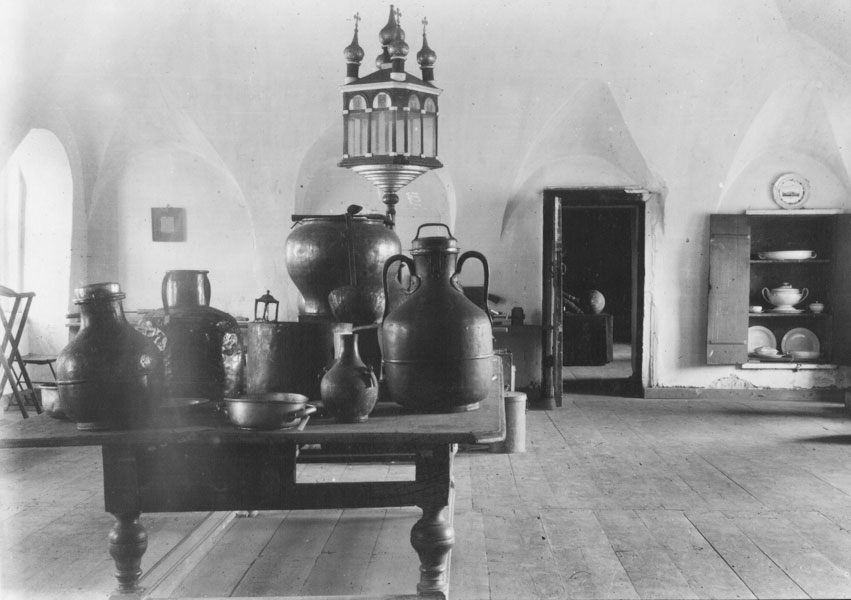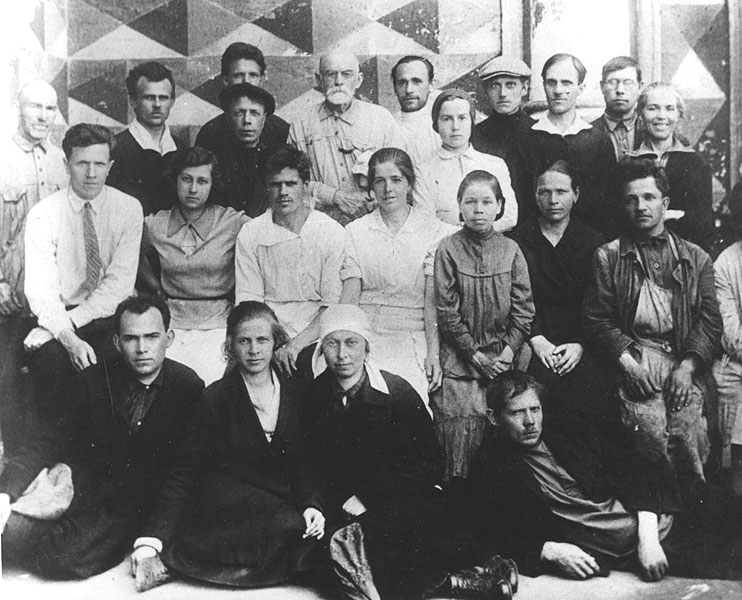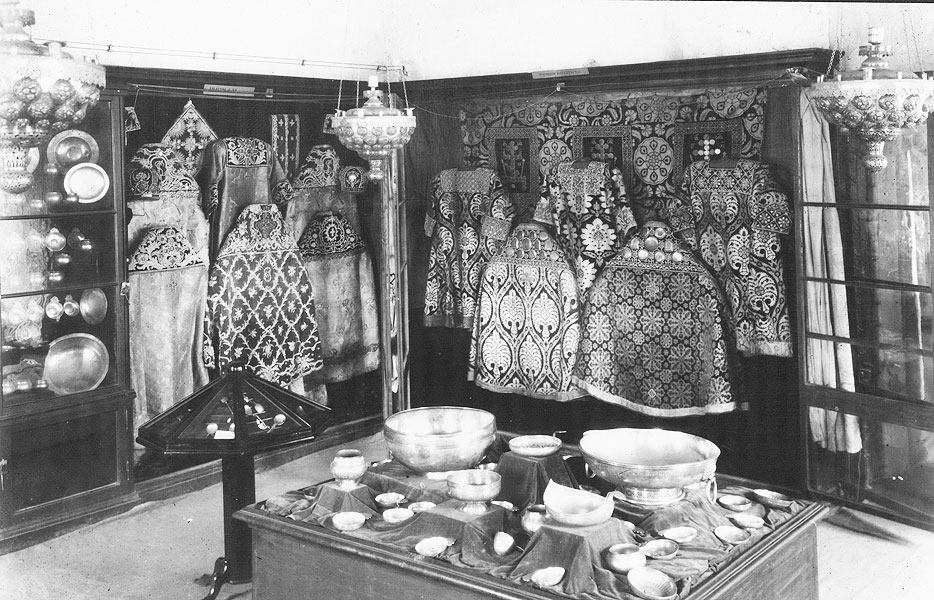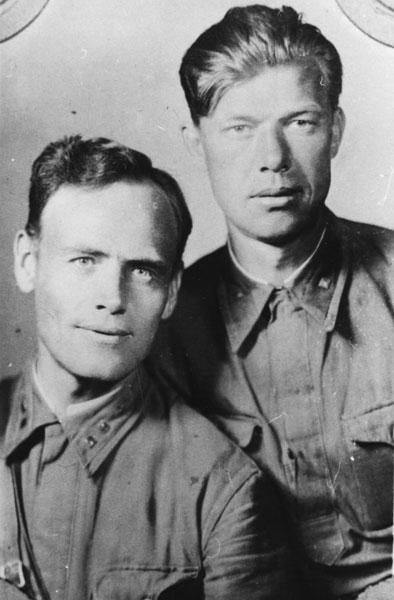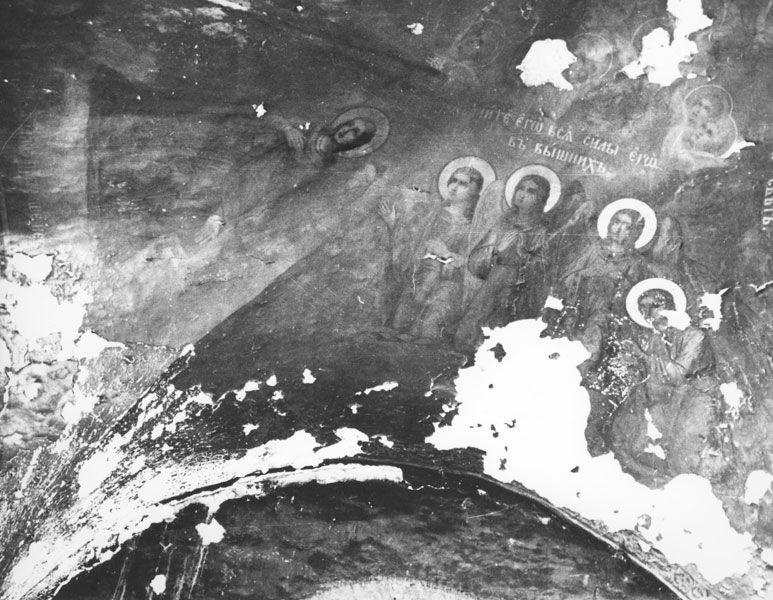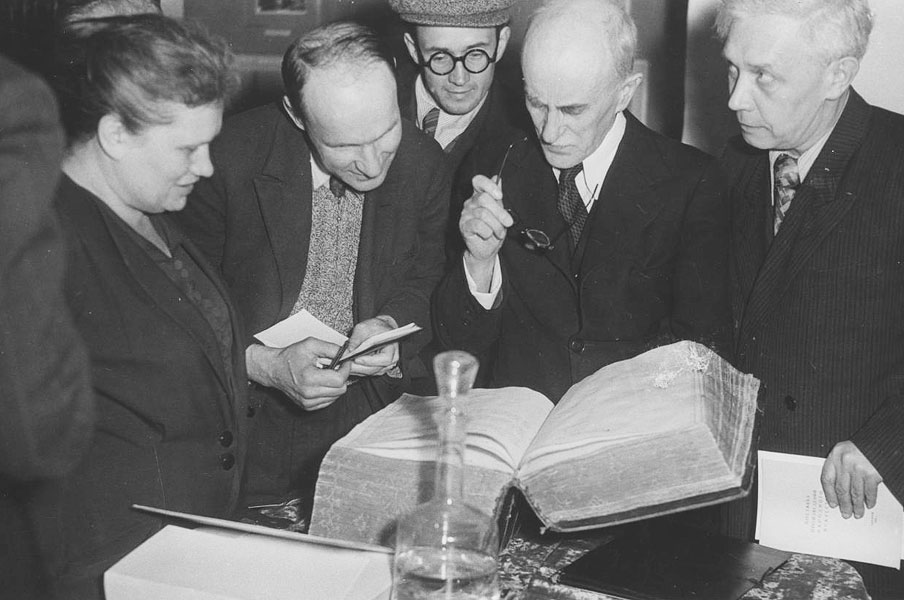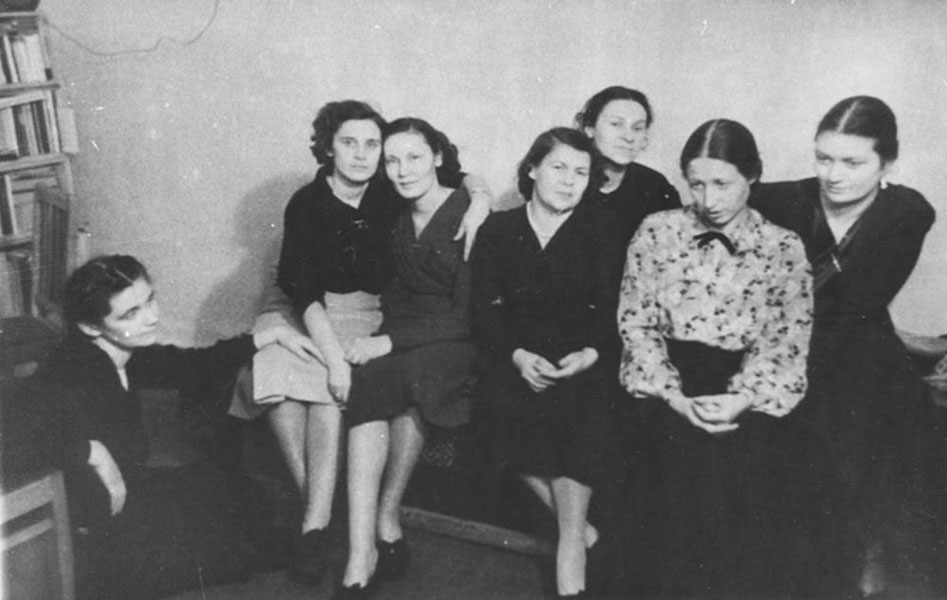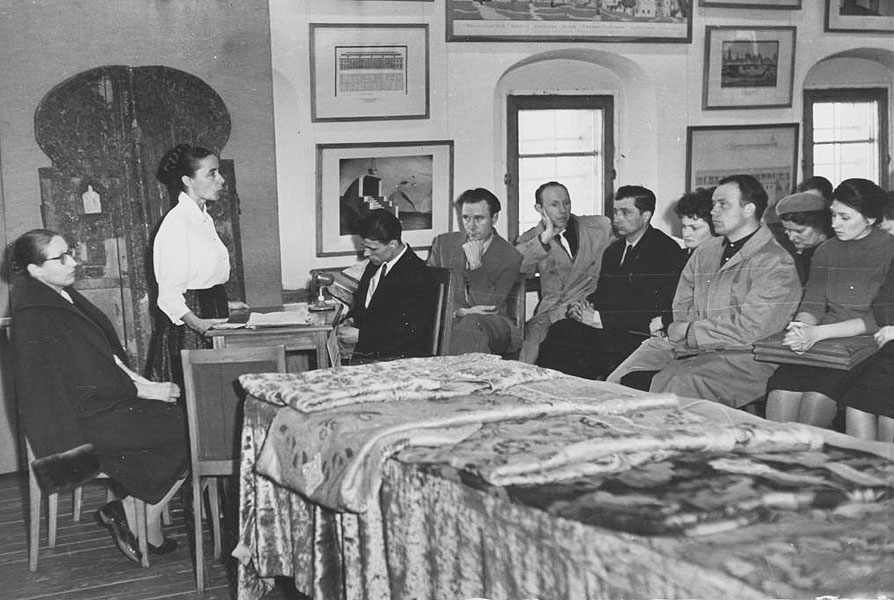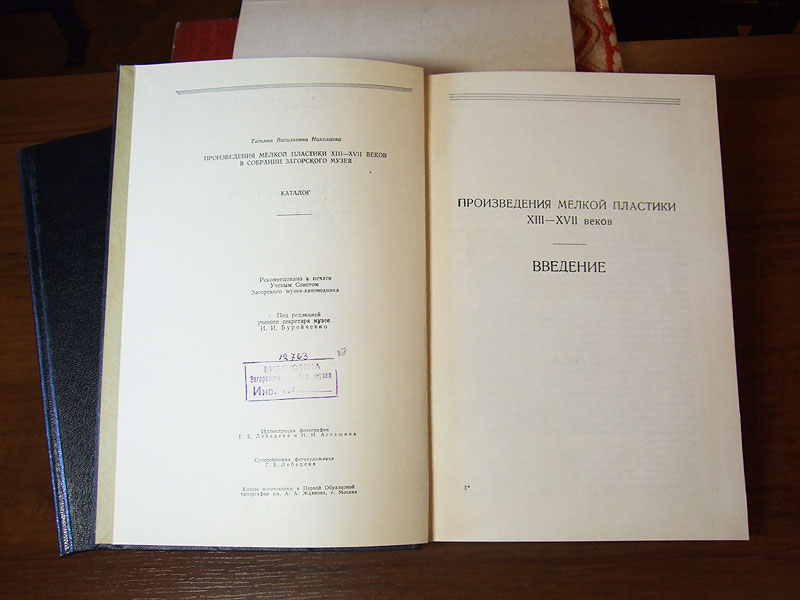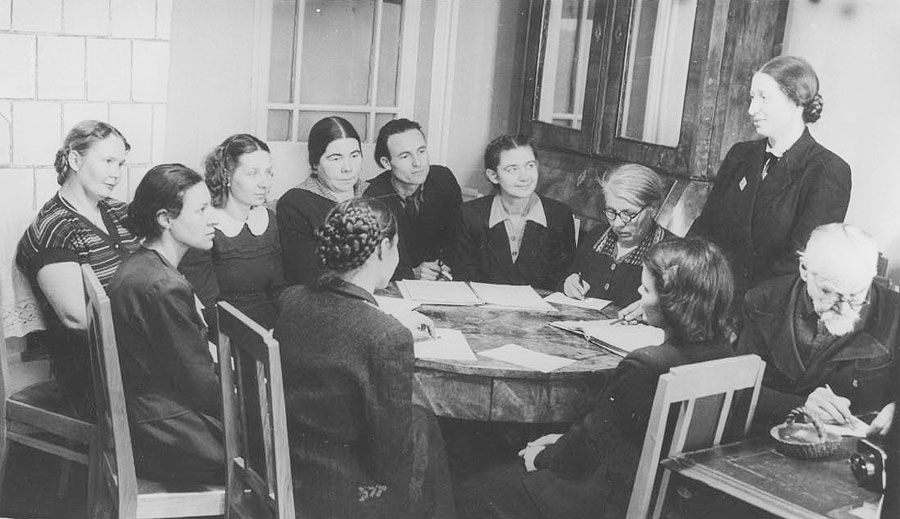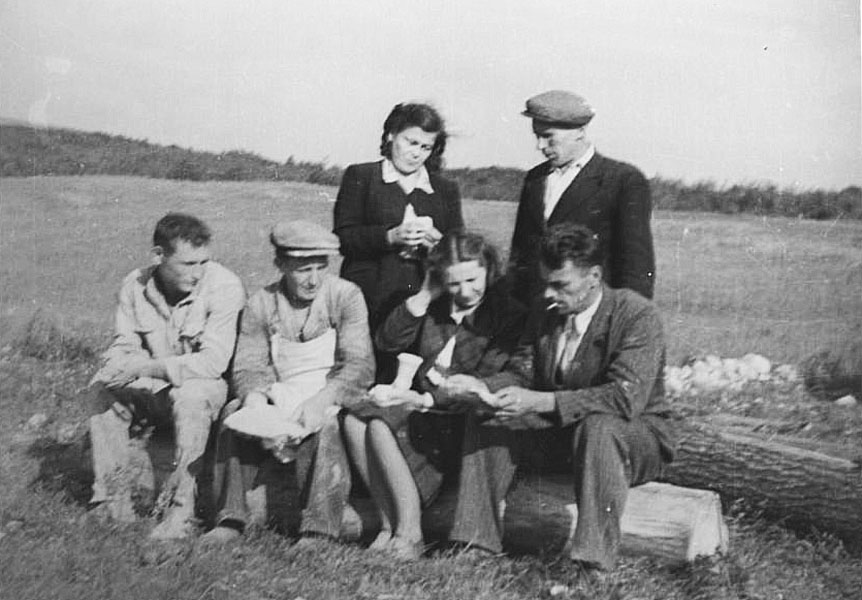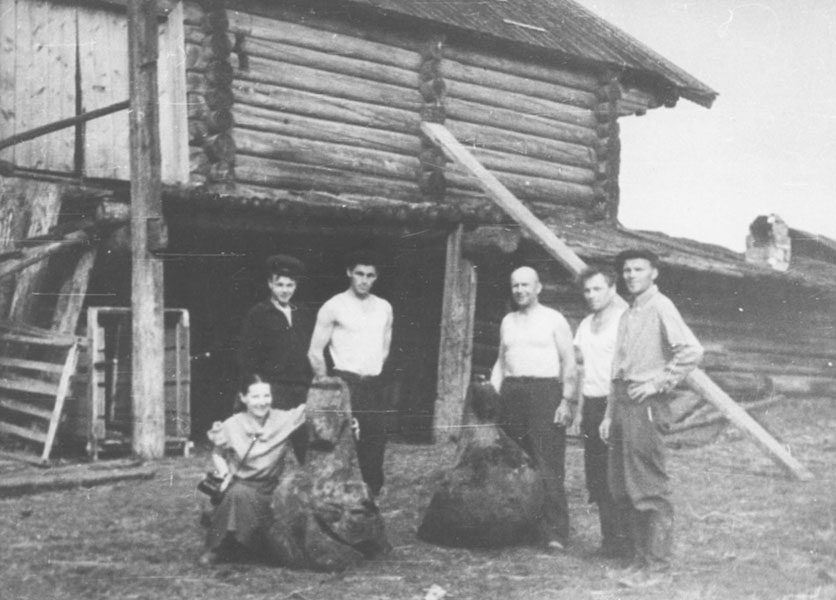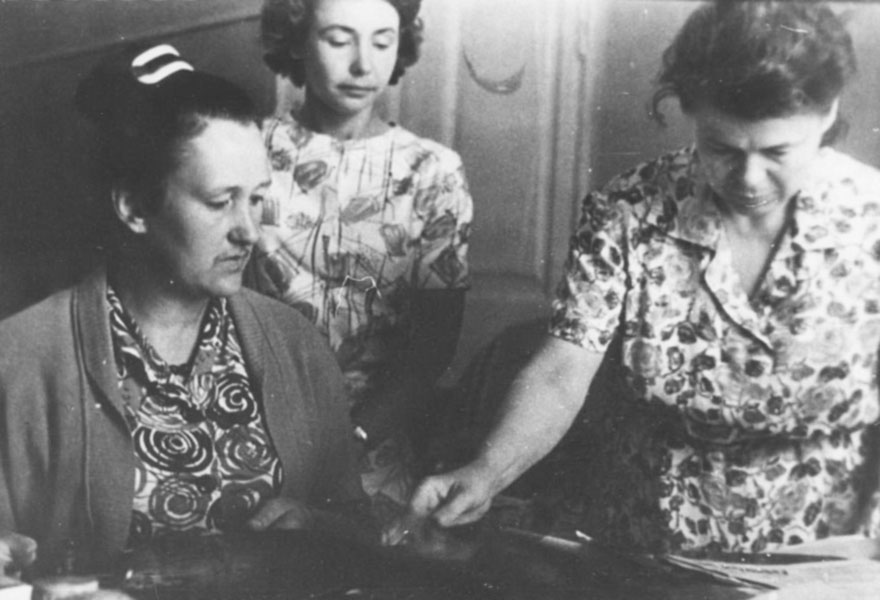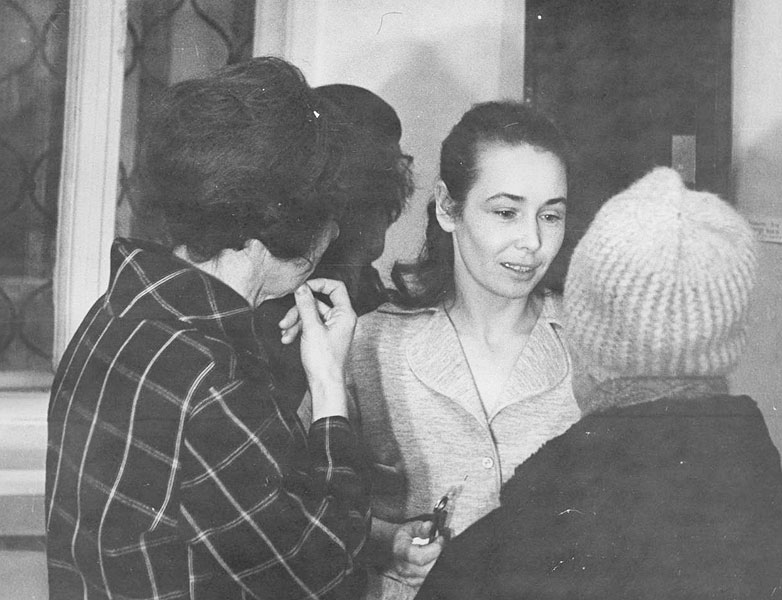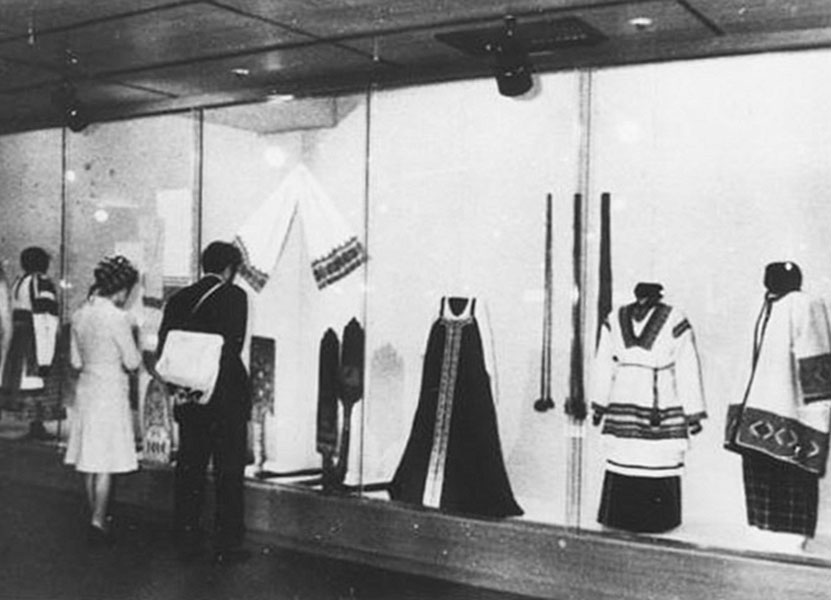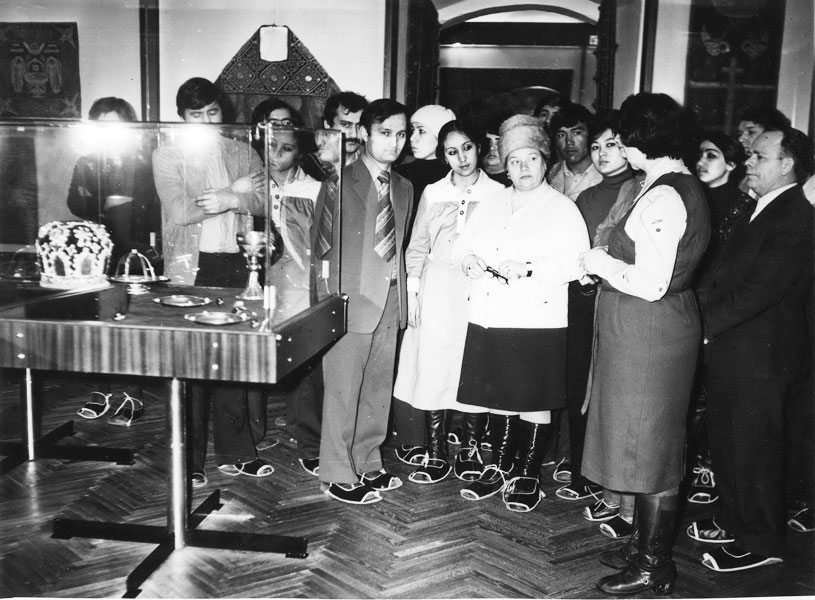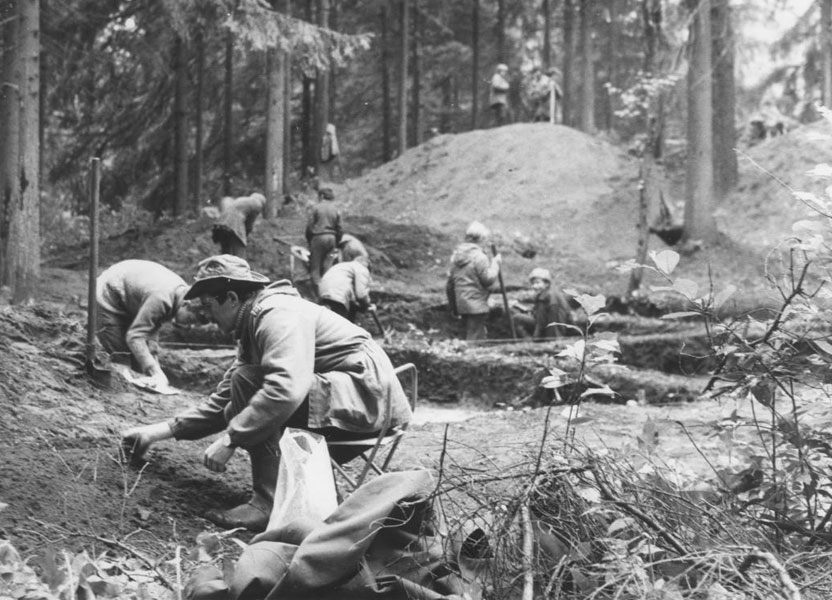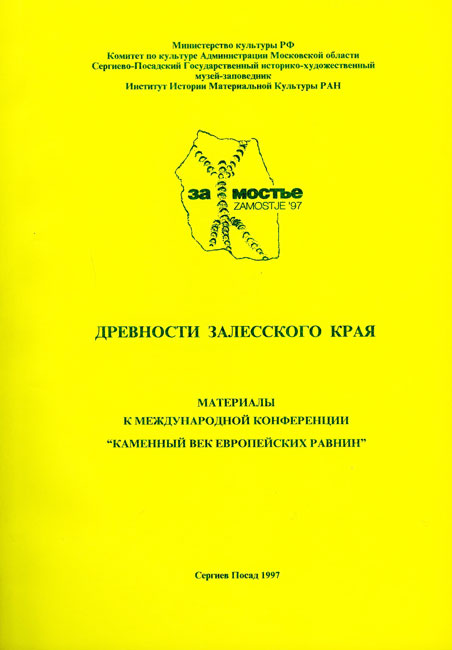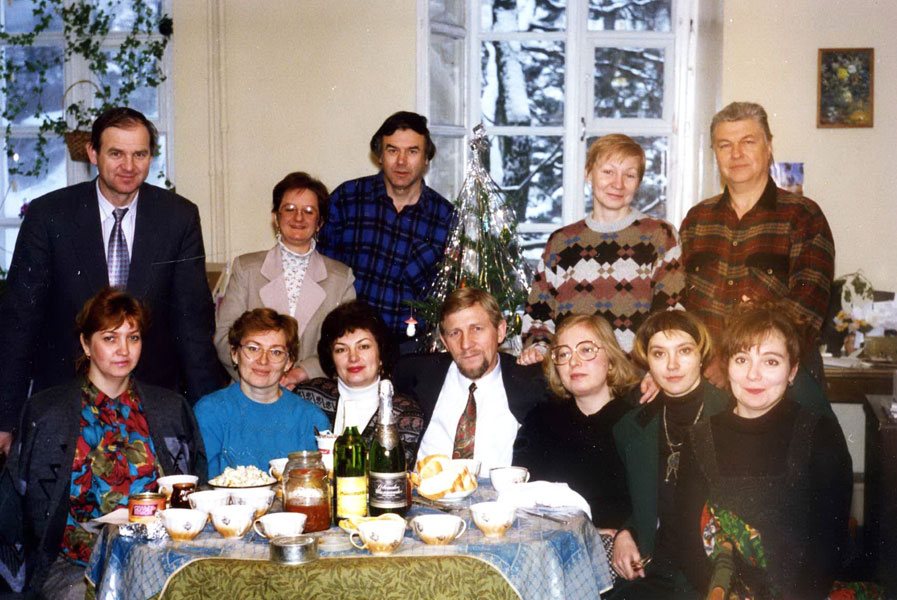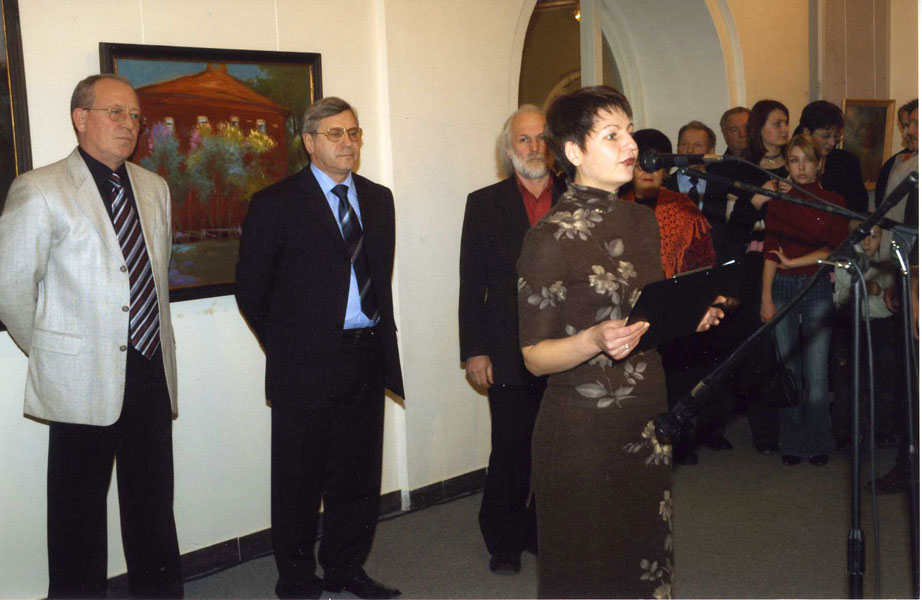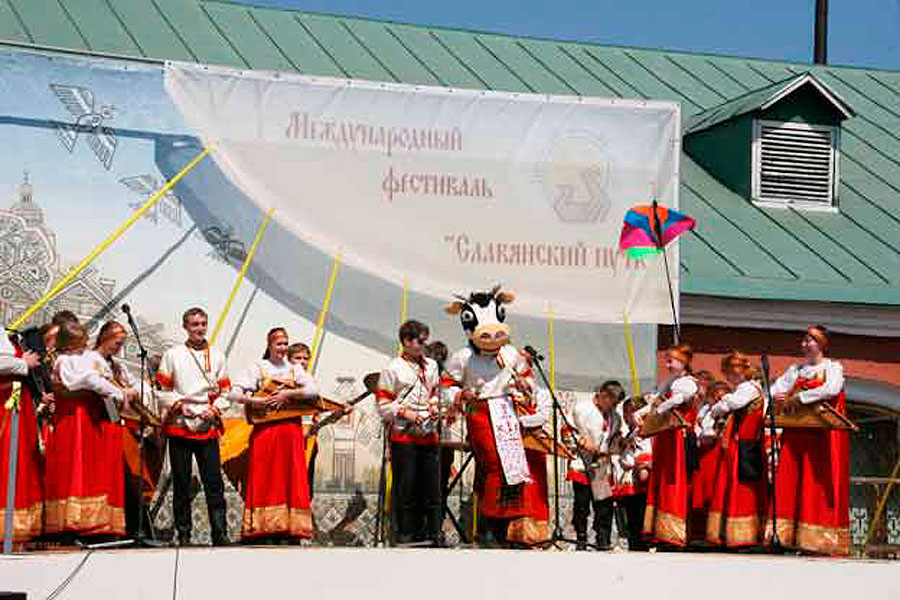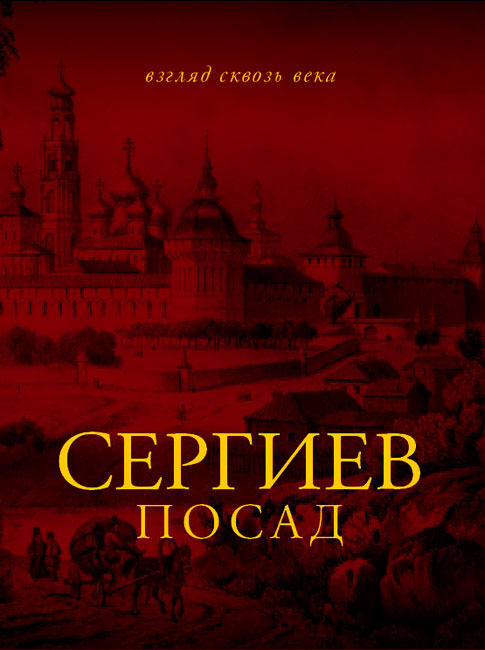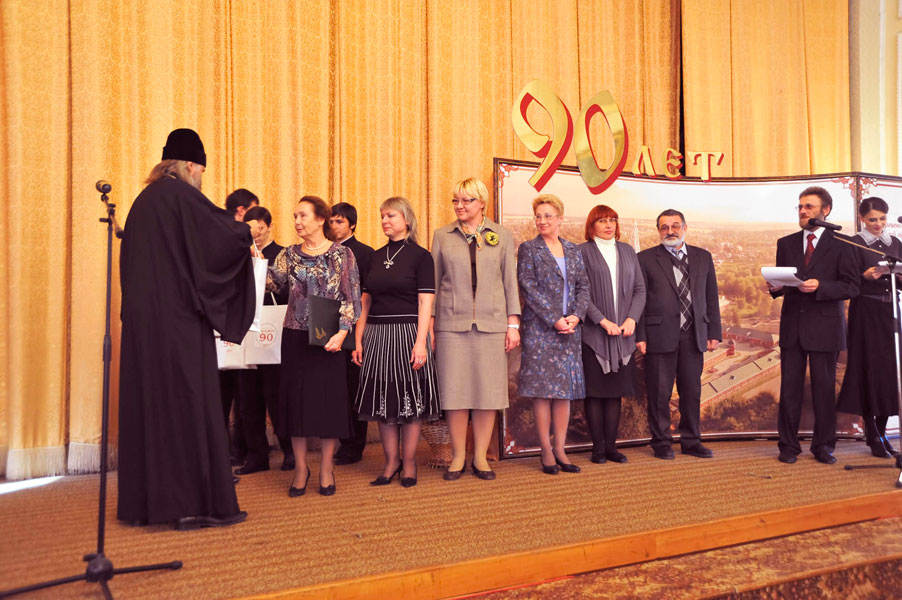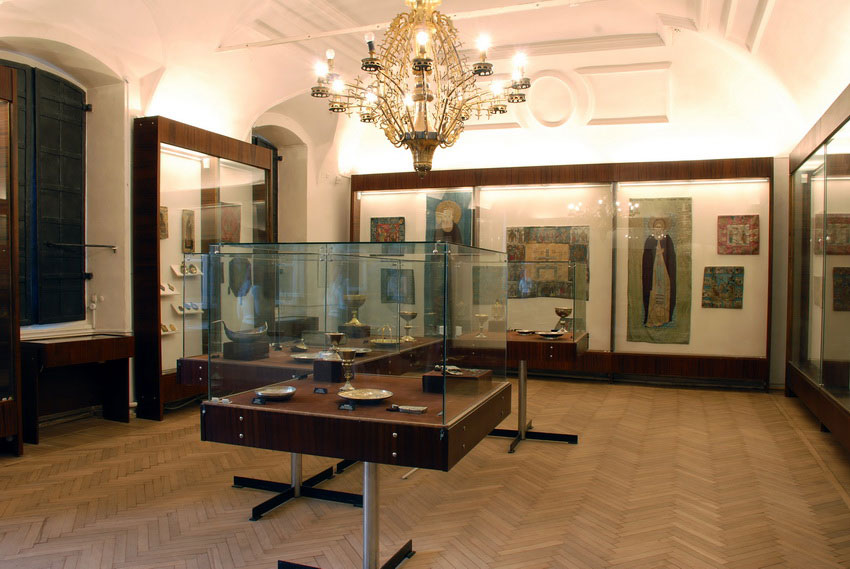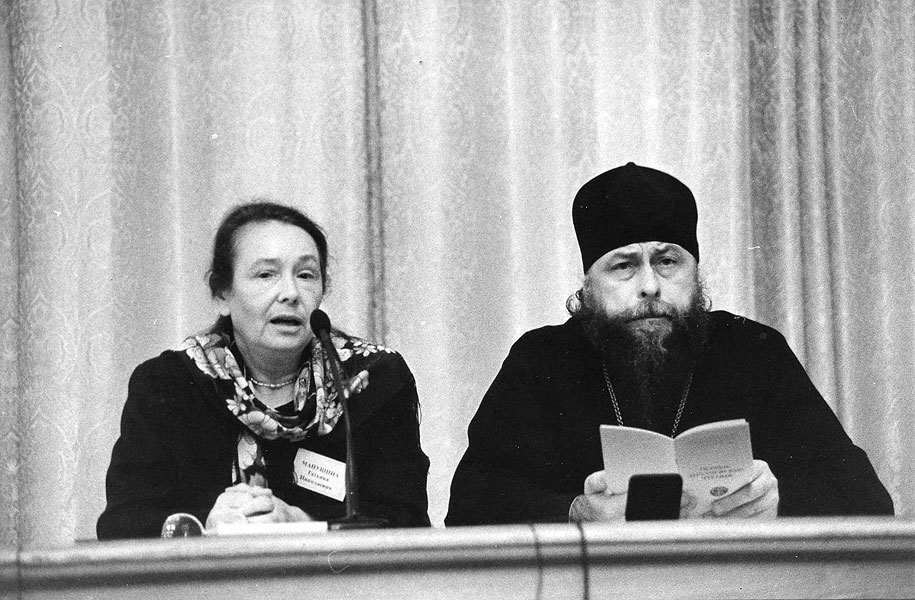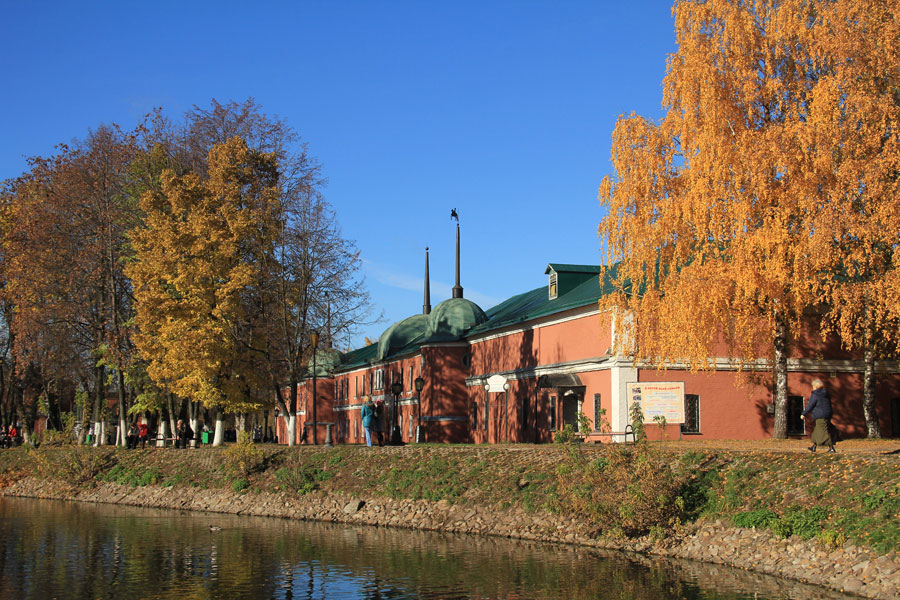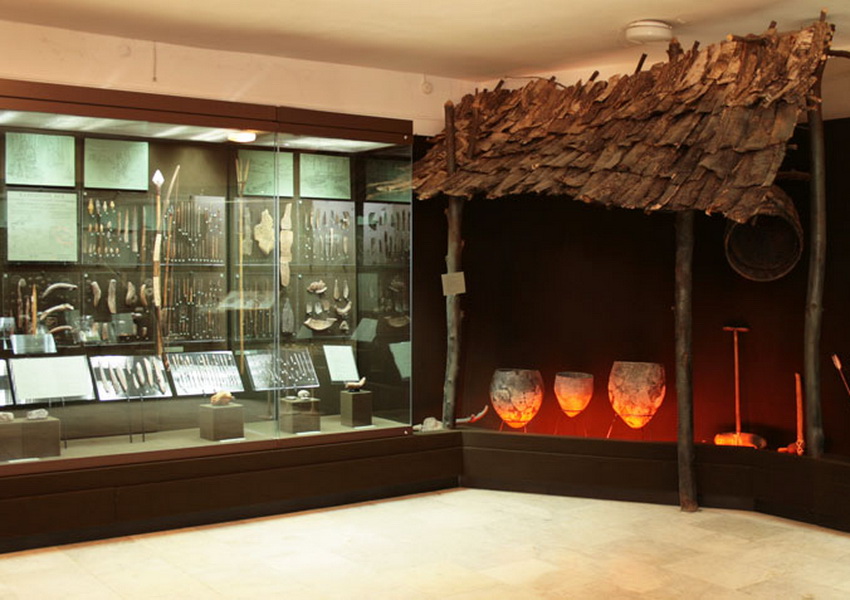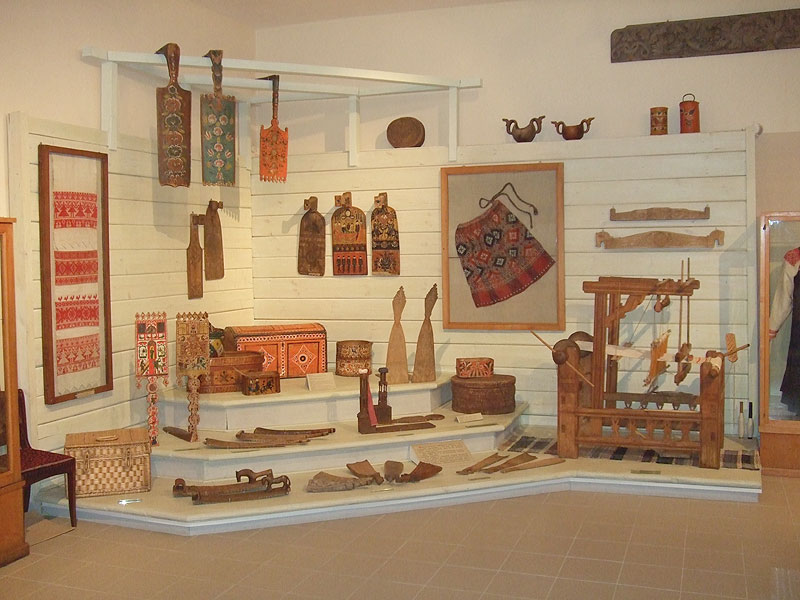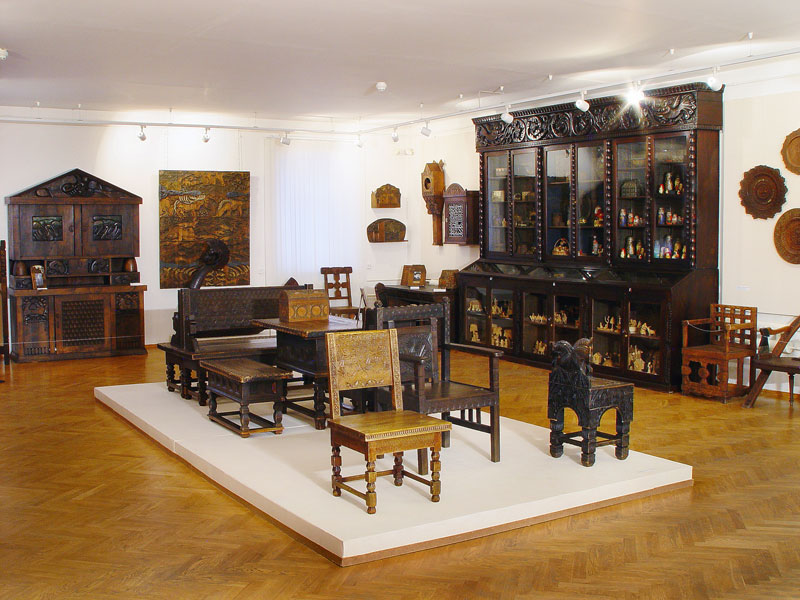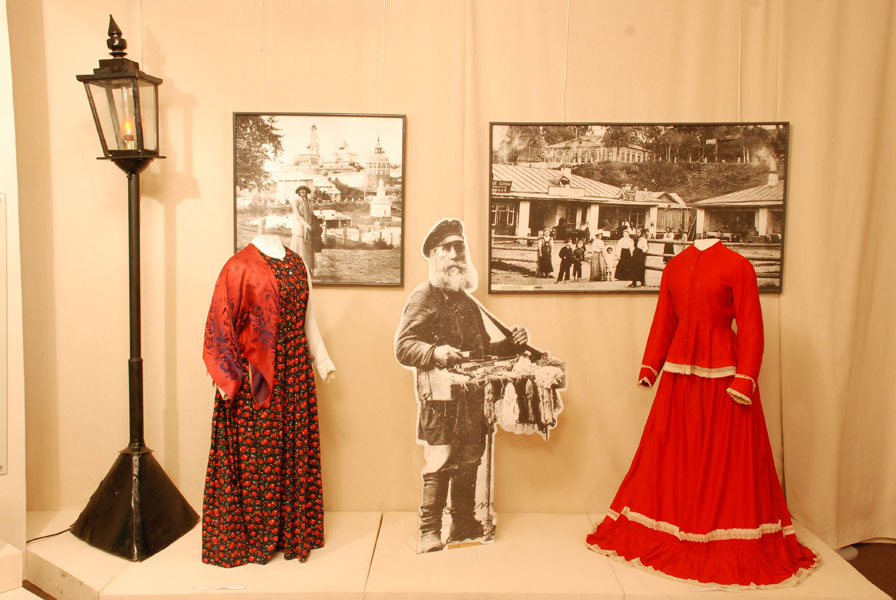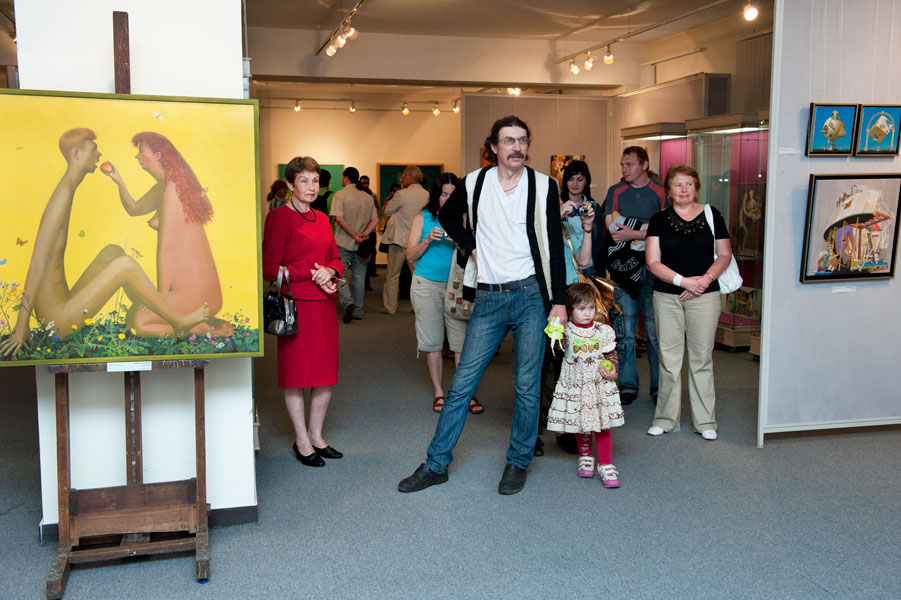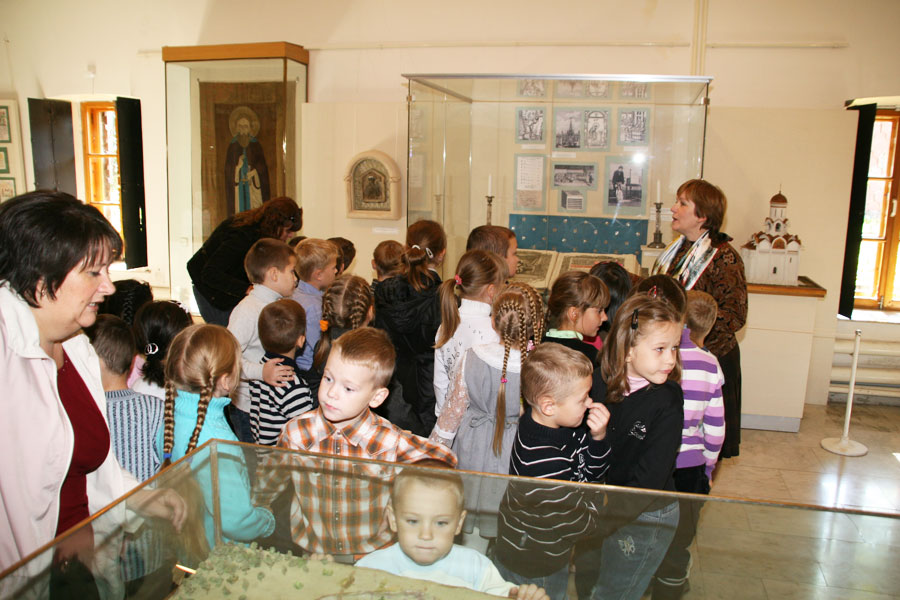The Main Steps of the Museum Activity
The Sergiev Posad State History and Art Museum-Reserve was founded in April 20, 1920 by the Decree of the first Soviet government “On Turning of the historic and artistic treasures of the Trinity-St. Sergius Lavra into a museum”. Florensky P.А. (1887-1937) The organization of the Museum was prepared by the Commission on the Preservation of the Trinity Lavra Monuments of Art and History , formed in 1918 and functioning till 1925. The members of the Commission were P.A. Florensky, Yu. A. Olsufyev, A.N. Svirin, T.N. Alexandrova-Dolnik, P.G. Kapterev, I.E. Bondarenko and others.
In the course of several months they registered the collections of icons, embroidery, church silverware, manuscripts, books, painting, furniture from the Sacristy, cathedrals and other premises of the Trinity-St. Sergius Lavra, in the library of the Moscow Theological Academy and in the Bethany Seminary. At the same time the large-scale research and publishing activity were carried out.
By the end of 1919 the Commission had practically competed the preliminary description of the collections (10.000 items), so the museum could be organized. The Commission on its foundation included the leading scientists I.E. Grabar, P.P. Muratov, N.M. Shchekotov, M.S. Sergeyev.
The first director was an artist and public figure V.D. Derviz, the first curator – art historian A.N. Svirin. During 1924 – 1925 the Commission completely passed its functions to the Sergiev History and Art Museum. It was at that time that the main spheres of the Museum activity were determined.
The collection of Old Russian art formed the basic part of the museum. For the first time its unique significance and role in the development of Russian spiritual and cultural life were discovered in the articles of the small edition “The Trinity-St. Sergius Lavra” published by the Commission in 1919.. The Treasures of Old Russian art were never hidden. In 1920, the displays and exhibitions presented nearly the whole Monastery collection.
The following step in the investigation of the local artistic traditions was the exhibition of handicrafts displayed in 1922. The organizer V.I. Sokolov played an noticeable role in the development of local arts.
Intensive collecting and research provided a good stimulus for the new expositions determining a new period in the Museum history at the beginning of 1970s. The new Sacristy prepared by T.N. Manushina. 4. 600 square meters were occupied by the systematic exhibition complex: “History of the Trinity-St. Sergius Lavra”, “Necropolis of the Trinity-St. Sergius Lavra”, “The Architectural Ensemble of the Trinity-St. Sergius Lavra and Methods of its Restoration”, “Old Russian Painting of the 14th – 17th cc.”, “Old Russian Applied Art of the 14th – 17th cc.”, “Russian Art of the 18th – early 20th cc.”, “Russian Folk Art of the 18th –early 20th cc.”, “Contemporary Applied and Decorative Art”.
In 1980s the investigation of history, culture and architecture of the Sergiev Posad district was intensified. The Local History Department tried hard to collect items, old photos and organized various exhibitions. The results of the investigation were published in K.A. Filimonov’s books “Sergiev Posad” with articles of V.A. Tkachenko and S.V. Gorozhanina (1998, 2002) and “Khotkovo” (2002, 2004). In 2007 the album “Returning to Faith. The Cathedrals of the Sergiev Posad District” composed by K.A. Filimonov with the participation of other museum specialists.
The positive experience has turned the museum into a real scientific, cultural and educational center of the local district and of the country in general. The investigated collections and exhibitions, based on the scientific principles, are the foundation for the educational activity of the museum. Its various forms are aimed at the formation of the integral attitude to the cultural and historical heritage.
Literature
Nevertheless, in 1930s the prevailing anti-religious tendency practically lead to their closing. The exhibitions of that time called “ The Lavra and its Connections with Tsarist Autocracy at the Epoch of Feudalism ”, “Everyday Life of the Higher Clergy” were characteristic. At that time a part of the collection of the 18th – 19th century passed to the State Depository and other museums.
Since the first years of the Museum history there began the restoration of the architectural monuments of the Trinity-St. Sergius Lavra, as their condition had been the scientific world’s concern since the beginning of the 20th century. The best specialists were engaged in that work: P.D. Sukhov began the restoration of the Trinity Cathedral, P.D. Baranovsky made a reconstruction model of the Church of the Holy Ghost based on the research.
In 1938, the General Restoration Plan of I.V. Trofimov, worked out with the participation of A.V. Shchyusev, was adopted. The restoration, according the General plan, was supervised by the Museum Scientific Council, including the outstanding scientists I.E. Grabar, A.V. Artsikhovsky, S.V. Bakhrushin, M.V. Nesterov,etc.
From the very beginning the Museum had been interested in history of local art. The organization of the Museum attracted the local artists. M.V. Boskin, V.I. Khrustachev, V.F. Mei became members of the Commission, and V.I. Sokolov was the head of the Commission for some time. In December 1920, he organized the first exhibition displaying 200 works, depicting the Lavra.
The following step in the investigation of the local artistic traditions was the exhibition of handicrafts displayed in 1922. The organizer V.I. Sokolov played an noticeable role in the development of local arts.
After the exhibition they decided “to preserve the exhibits for the foundation of the permanent museum of the local crafts”. That exhibition was the beginning of the collections of the Sergiev Local History Museum.
In 1930, the exhibition specimens passed to the basic part of the History and Art Museum , comprising a considerable collection of folk art and handicrafts.
So, it was quite natural, that in 1941 the Zagorsk Museum (the town was renamed Zagorsk in 1930) acquired the collections of the Moscow Museum of Handicrafts (Volga area house carving, embroidery, costumes, Ugro-Finnish art of the Middle Volga Area), formed by the famous researchers of folk art I.P. Zvantsev, G.S. Maslova, V.N. Belitser.
During the Great Patriotic War the most valuable collections, first of all, the collections of Old Russian art, were evacuated behind the Urals. Some part of the collection stayed on the territory of the Trinity-St. Sergius Lavra. For all the difficulties, in 1942, the Museum organized guided tours, in 1943 the Museum received 15712 visitors, in 1944 – 20081.
In the post-war time a new period in the Museum history began. In 1946 the male monastery and Moscow Theological Schools resumed their activity. The cathedrals were reopened for church services. Since that time the Museum occupied just a complex of buildings along the western fortress wall. The new conditions of the monuments functioning demanded active restoration of the architectural complex.
It was carried out in co-operation with the Moscow Patriarchy. But they still followed the General plan of 1938. The ideas, expressed in that document, developed in the restoration works carried out under the direction of V.I. Baldin in 1950 – 1970. V. Baldin’s research were reflected in the complex project of the Lavra restoration adopted in 1963, which suggested the most expressive view of the monuments (the authors - V.I. Baldin, A.G. Ustinov).
Еhe post-war time was the period of the intensive study of the ancient Lavra collection, the first steps in the research of folk art, first conferences, first serious publications (after 1920s). During several post-war years there was a complete rearrangement of the Museum according to the general plan of 1944, which was highly estimated by V.N. Lazarev, S.V. Bakhrushin.
Еhe expositions “Old Russian Art of the 14th – 17th century” (1946), “Folk Art” (1947, reorganized in 1952), “Russian Art of the 18th century” (reorganized in 1954 into “Russian Applied Art of the 18th – 19th century), based on the serious scientific research, became more systematic. The exhibiting principles determined the Museum character for the subsequent decades, though all those exhibitions were constantly developing.
The exhibition “Old Russian Art and Culture of the 15th – 17th century” was housed in three halls of the former Monastery Sacristy. The author Yu.A. Lebedeva presented the unique collection chronologically and in all aspects, which gave an opportunity to trace the development of Russian national art. As time went on, the exhibition extended, new exhibits were added.
In the subsequent displays “Old Russian Painting” and “Old Russian Applied Art” of 1974 they used the same scientific principles and exhibition methods. The exhibitions were organized thanks to the successful work of the Museum restorers.
The research workers Yu.A.Lebedeva, N.A. Mayasova, T.V. Nikolayeva, I.I. Bureichenko, O.A. Belobrova, O.N. Esipova, O.V. Kruglova, L.E. Kalmykova, T.N. Kedrova, E.N. Klitina, L.N. Boikova, who came in 1940s – 1950s, made a considerable contribution in the study of the collections. They resumed publication of the scientific edition titled “Soobshchenia Zagorskogo gosudarstvennogo istorico-khudozhestvennogo muzeya-zapovednika” (“The Works of the Zagorsk State History and Art Museum-Reserve”), and catalogues. The first catalogue was “Proizvedeniya melkoi plastiki v sobraniyi muzeya” (“Small-Size Sculptures in the Museum Collection” by T.V. Nikolayeva (Zagorsk, 1960).
Alongside with the study of the ancient collections they began to investigate folk and contemporary applied art, presented only by the occasional separated groups of items. The investigation was carried out mainly by the annual expeditions, organized since 1953 in the different centers of Russian folk art.
The expeditions worked in 20 regions. Archangel, Vologda, Yaroslavl, Kostroma, Kalinin, Moscow and Penza Regions have been thoroughly investigated .Due to the efforts of several generations of specialists the Museum possesses one of the best collections of folk art in our country. The traditions of the scientific approach to the formation of the collections are still carefully preserved in the Museum.
The collections of contemporary applied and decorative art were actively enlarged. The Museum kept contacts with the creative workers of the artistic enterprises. Every year there were organized exhibitions presenting various kinds of contemporary applied and decorative art. In 1965 – 1966, about 60 large enterprises of artistic industry provided items of glass, cut glass, porcelain, faience, fabrics, etc.
The large-scale collecting activity of the Museum included the regular survey of the earthwork and building on the territory of the Trinity-St. Sergius Lavra. It resulted in discovery of numerous white tomb stones which helped to reconstruct the ancient Monastery Necropolis.
ЭThe exhibition complexes gave a comprehensive idea of the development of Russian art in the course of seven centuries and of the role and significance of the Trinity-St. Sergius Lavra in Russian history. The unique architectural ensemble and the Museum treasures permitted to declare Sergiev Posad (Zagorsk) a tourist center (according to the statement of the Council of Ministers of the RSFSR of January 24, 1969) and include it into a group of towns forming the Golden Ring of Russia.
In 1980s the Museum scientific work included a new field – local archeology. Since that time the materials, documents, works of art have been regularly collected, the archeological surveys and excavations have been carried out, interesting exhibitions have been organized. In 1997, the Museum organized the first international conference “The Stone Age of the European Plains”. It was based on the scientific achievements in the investigation of the Sergiev Posad district.
At the same period the Museum research workers prepared all necessary scientific and technical documents to inscribe the architectural ensemble of the Trinity-St. Sergius Lavra on the UNESCO List of the World Cultural Heritage in 1993. The scientific research was reflected in the regular conferences. In 1960 – 1988, 22 conferences and 16 seminars were organized, there were presented over 100 reports on different problems of the museum work.
In 1990s the new period in the museum history began. In 1992, the President direction referred the Sergiev Posad Museum-Reserve to the most valuable units of the national cultural heritage of the Russian Federation. According to the same direction all buildings within the fortress wall, except the Sacristy and Vicegerent Residence, completely passed to the Moscow Patriarchate. The Museum acquired buildings in the central part of the town. “The Sacristy of the Trinity-St. Sergius Lavra of the 14th – 19th c.” stayed on the Monastery territory.
In 1997 the Museum held the first international archaeological conference "The Stone Age of European Plains". In 1999 our Museum was the first Russian museum that had prepared a conference on the problem of "People's Culture and Orthodoxy" with the participation of scientists from Belarus and Ukraine. In 2007 the Ministry of Culture of the Moscow Region held a seminar on the preservation of the traditions of folk arts and crafts on the basis of the Museum. Since 2009 the Museum has started the International Festival "Slavic Way", in which our colleagues from Bulgaria, Poland, Serbia take part.
In 2001 – 2005 the museum moved to the restored parts of the new museum complex “Konny Dvor” – a monument of the 18th – 20th c. architecture. Some halls are still in the process of restoration. But the new exhibitions already demonstrate the peculiarity of the museum collection. Despite the difficulties in transportation of 100 thousand items, the collection remains integral. Under the circumstances the staff has to concentrate creative efforts which brings positive results. Of great importance was the participation in the exhibition "Trinity-Sergius Lavra and Russian Sovereigns: Relics and Art Treasures" in 2002 together with the Moscow Kremlin Museums.
In 1997 the Museum held the first international archaeological conference "The Stone Age of European Plains". In 1999 our Museum was the first Russian museum that had prepared a conference on the problem of "People's Culture and Orthodoxy" with the participation of scientists from Belarus and Ukraine. In 2007 the Ministry of Culture of the Moscow Region held a seminar on the preservation of the traditions of folk arts and crafts on the basis of the Museum. Since 2009 the Museum has started the International Festival "Slavic Way", in which our colleagues from Bulgaria, Poland, Serbia take part.
Музейными сотрудниками введены в научный оборот сотни памятников иконописи, шитья, золотого и серебряного дела Древней Руси, искусства XVIII – XIX вв., русского народного искусства, современного изобразительного и декоративно-прикладного искусства, множество архивных документов; почти все выставки музея сопровождаются каталогами. Опубликованы уникальные монастырские рукописи: Вкладная книга 1673 г. и Кормовая книга 1674 г. В настоящем сборнике впервые публикуется текст самого раннего и наиболее полного синодика погибших в период осады Троице-Сергиева монастыря 1608 – 1610 гг. К 90-летию музея вышла в свет книга «Сергиев Посад. Взгляд сквозь века» (Сергиев Посад, издательство «Ремарко»).
Since 1990 they resumed the edition of the “Soobshcheniya”, the conferences involved more problems. Since 1998 the biannual international conferences titled “The Trinity-St. Sergius Lavra in History, Culture and Spiritual Life of Russia” with publication of the reports have been organized by the museum in co-operation with the Trinity-St. Sergius Lavra.
The new conditions inspired the development of the displaying methods. The new exhibitions “The Ancient Past of the Sergiev Posad Land” and “History of Sergiev Posad of the 20th c.” were based on the collections formed in 1980s. “The Sacristy of the Trinity-St. Sergius Lavra of the 14th – 19th cc.” reflected the attempt to show the whole complex of the collection historically formed in the Monastery.
“The Trinity-St. Sergius Lavra: Architectural ensemble and its restoration” demonstrated the development of the architectural ensemble and its restoration in connection with different events, facts and people’s life. “The Circle of Earthly Life” presents a new approach to the interpretation of folk art. The richest collection of artistic handicrafts is organized as “open depository”.
В 2014 году музей торжественно отметил 700-летию прп. Сергия Радонежского. Была создана выставка «И свеча не угасла..», которая впервые объединила произведения XV – начала XXI в., посвященные Св. Сергию, из 11 музеев РФ. Сотрудниками музея были подготовлены четыре книги, среди них альбом-каталог «Преподобный Сергий Радонежский. Образ простоты, правды, святости. Иконография XV-XX века». М.:Лето, 2014.
This period was marked by varied exhibitions presenting the new acquisitions, results of the investigation of the museum collections and works of contemporary artists. Since 1995 the annual exhibition “Autunm Salon” has been organized by the museum in co-operation with the town administration and the local branch of the Union of Artists.
На основе экспозиций и выставок, адаптации научных исследований разрабатываются и апробируются просветительские проекты: образовательные и интерактивные программы, культурно-массовые мероприятия, мастер-классы, лекции и тематические экскурсии. Особое внимание уделяется работе с детьми и молодежью, формированию ценностного отношения к историческому наследию, знакомству с традициями русской культуры, созданию в музее благоприятной среды для творчества. Просветительский проект музея «Народный университет», осуществляемый в сотрудничестве с городским советом ветеранов, стал лауреатом конкурса Губернатора Московской области.
1. Sb. Dokladov I statei na konferentsii, posvyashchennoi 100-letiyu so dnya rozhdeniya V.I. Lenina. – Zagorsk, 1970.
2. Yubileinyi vypusk gazety “Vpered” k 70-letiyu muzeya. 1990, N 55 (11900). The authors: G.V. Chekhomova, T.N. Manushina, L.M. Spirina, A.A. Pavlovskaya, E.V. Kutsenko, L.A. Shitova, V.M. Zhiguleva, L.E. Kalmykova,, S.V. Gorozhanina.
3. E.S. Smirnova. K 7o-letiyu Sergievo-Posadskogo istoriko-khudozhestvennogo muzeya-zapovednika. Soobshcheniya Zagorskogo muzeya-zapovednika. – M.: Nauka, 1900. – PP. 3 – 6.
4. T.N. Manushina. K 75-letiyu Sergievo-Posadskogo istoriko-khudozhestvennogo muzeya-zapovednika. (Sergievo-Posadskii muzei-zapovednik. Soobshcheniya. 1995. – PP. 5 – 9.
5. T.N. Manushina. K 80-letiyu Sergievo-Posadskogo istoriko-khudozhestvennogo muzeya-zapovednika. (Sergievo-Posadskii muzei-zapovednik. Soobshcheniya 2000. - M.: Podkova, 2000. – PP. 3 – 14.
6. T.N. Manushina. K 85-letiyu Sergievo-Posadskogo istoriko-khudozhestvennogo muzeya-zapovednika. (Sergievo-Posadskii muzei-zapovednik. Soobshcheniya 2005. – M.: Indrik, Indrik, 2006. – PP. 5 – 9.
7. T.N. Manushina. K 90-letiyu Sergievo-Posadskogo istoriko-khudozhestvennogo muzeya-zapovednika. (Sergievo-Posadskii muzei-zapovednik. Soobshcheniya 2010. – Sergiev Posad, 2010. – PP. 3 – 6.
8. T.N. Manushina. K 95-letiyu Sergievo-Posadskogo istoriko-khudozhestvennogo muzeya-zapovednika. (Sergievo-Posadskii muzei-zapovednik. Soobshcheniya 2015. – M.: Sergiev Posad, 2015. – PP. 5 – 9.
9. T.N. Manushina. Nauchno-prosvetitelnaya rabota Sergievo- Posadskogo muzeya-zapovednika. /Sergievo-Posadsky muzei-zapovednik. Soobshcheniya 2005. – M.: Indrik, 2006. – PP. 297 – 312.
10. M.S. Trubacheva. Komissiya po okhrane pamyatnikov stariny i iskusstva Troitse-Sergievoi Lavry 1918 – 1925. Muzei-5. M.: Sovetsky khudoshnik, 1984. – PP. 152 – 164.









